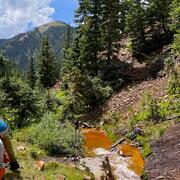Geology, Geophysics, and Geochemistry Science Center
Welcome to the Geology, Geophysics, and Geochemistry Science Center (GGGSC) located in Lakewood, Colorado on the Denver Federal Center. At GGGSC, we apply expertise in geology, geophysics, and geochemistry to interdisciplinary efforts in support of the USGS mission to address the Nation’s important earth science issues, with an emphasis on mineral resources.
Science Branches
Our strong science portfolio integrates regional and economic geology with a broad range of geophysical, geochemical, analytical expertise. Our center has four scientific branches:





